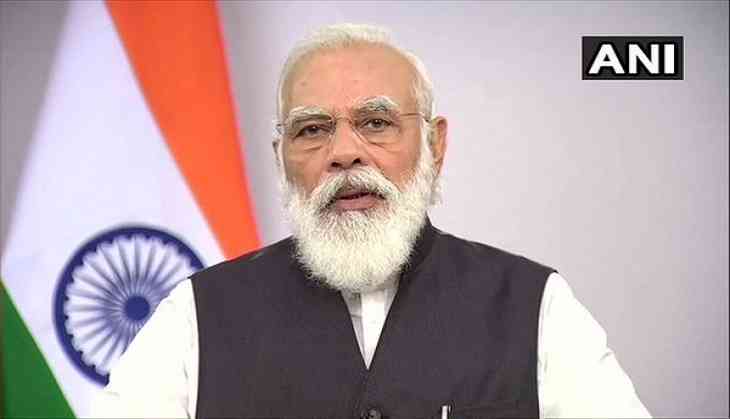
Crossing another milestone, Prime Minister Narendra Modi entered 20th consecutive year as the democratically elected head of a government, without a break, on Wednesday.
The journey of the Prime Minister in public office began on October 7, 2001, as the Chief Minister of Gujarat. This was followed by three terms as the Gujarat CM in 2002, 2007 and 2012, respectively.
During the third term as the Gujarat CM, however, Modi fought the 2014 general elections.
His popularity, which was going through the roof both inside and outside the State, led to the BJP declaring him as its prime ministerial candidate in 2013.
He had been projected as the Bharatiya Janata Party (BJP) led National Democratic Alliance (NDA) candidate for the PM post.
Defeating the Congress-led government which held sway at the Centre, CM Modi left Gujarat to take over the reins at the Centre. Since then, he has solidified his position with the NDA coalition retaining its position in the Centre with an even bigger margin in the 2019 general elections.
"If the first term was fulfilling the needs of people then since 2019, PM Modi has set his sights on fulfilling the aspirations of 130 crore Indians. Jammu and Kashmir has finally been fully integrated in India and Article 370 is history. The Ram Mandir is now a reality with construction starting for a grand Ram Temple at the birth place of Prabhu Ram. Our farmers have finally been freed from artificially imposed chains on them and far-reaching, historic agriculture reforms are now a reality. A host of other reforms such as Labour Reforms, Coal Reforms, allowing private enterprise in the space sector, FDI reforms across the board and tax reforms have put in place a foundation for sustained years of economic growth," an article shared on the official website of PM Modi on the day read.
Meanwhile, the Prime Minister's journey to the head of an elected government started in 2001 in the backdrop of relief work for the devastating Bhuj earthquake.
The following years saw him rolling out several pro-people policies and actively reaching out to the people directly, leading to the formation of his image as a leader of the masses.
Further, upon becoming the Prime Minister, he continued the pro-people approach, which was further reflected in the various schemes such as Jan Dhan Yojana, the Mudra Yojana, the Jan Suraksha Yojana, the Ujjwala Yojana, the Saubhagya Yojana, Ayushman Bharat, the Pradhan Mantri Aawaas Yojana, the PM-Kisan Yojana, among others.
Moreover, during the COVID-19 pandemic phase too the pro-poor schemes continued, under which arrangements were made to provide foodgrains, jobs, financial help to migrant workers, farmers, among others during the lockdown phase.
As PM Modi enters the 20th consecutive year in public office, the mantra of 'development for all' continues to steer India ahead towards the goal of making an "Atmanirbhar Bharat".
(ANI)


